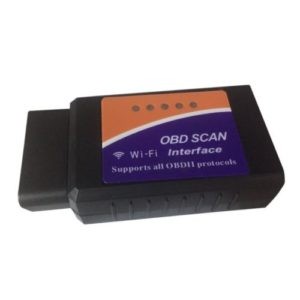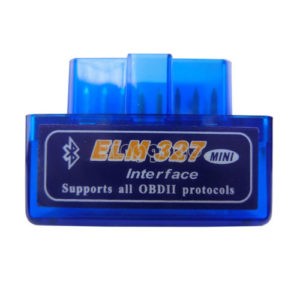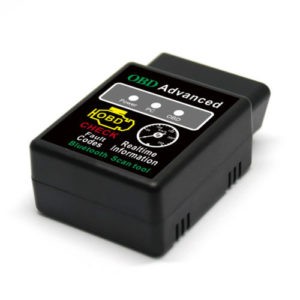Connecting your smartphone or tablet to your car’s onboard diagnostics (OBD) system opens a world of information about your vehicle’s health and performance. This connection relies on an ELM327 USB OBDII code scanner adapter, a crucial tool for reading and interpreting diagnostic trouble codes (DTCs). Choosing the right adapter is essential for a seamless diagnostic experience. This guide will walk you through the different types of ELM327 adapters, compatibility considerations, and tips for selecting a quality device.
Understanding ELM327 OBDII Adapters
An ELM327 adapter acts as a bridge between your car’s computer and your diagnostic software. It translates complex data into a readable format, allowing you to monitor engine performance, identify potential issues, and even clear some error codes.
Two key factors influence your choice of an ELM327 adapter:
-
Connection Type: Adapters utilize various communication methods, including Wi-Fi, Bluetooth (Classic and Low Energy/LE), and Bluetooth MFi (Made for iPhone/iPad). Your choice depends on your device’s operating system and personal preference.
-
Adapter Quality: A reliable adapter ensures accurate data transmission and a stable connection. Unfortunately, the market is flooded with low-quality adapters that can lead to frustrating and potentially harmful diagnostic errors.
ELM327 Adapter Compatibility
Apple iOS (iPhone/iPad): Car Scanner software on iOS devices supports Bluetooth LE (4.0), Wi-Fi, and Bluetooth MFi adapters. Classic Bluetooth (versions 1.x-3.x) is NOT compatible with iOS due to system limitations. For optimal performance and ease of use, Bluetooth LE adapters are recommended for iOS users.
Google Android: Android devices offer broader compatibility, supporting Classic Bluetooth, Bluetooth LE, and Wi-Fi adapters. Classic Bluetooth often provides faster data transfer speeds than Bluetooth LE, while Wi-Fi can be less reliable.
 Different types of ELM327 adapters
Different types of ELM327 adapters
Identifying a Quality ELM327 OBD2 Adapter
Forget outdated information about chip versions and board layouts. The true measure of an adapter lies in its performance. A good adapter simply works reliably, without glitches or freezes.
Beware of “bad” adapters that can exhibit the following issues:
-
Unstable Connection: Freezing, rebooting, and intermittent connectivity issues can hinder diagnostics.
-
Limited Command Support: Some adapters may not support all necessary OBDII commands, leading to incomplete data.
-
Data Loss or Corruption: Inaccurate data can result in misdiagnosis and potentially harmful actions.
-
Compatibility Problems: Certain adapters might be hard-coded for specific vehicle makes or models.
 Example of a low-quality ELM327 adapter
Example of a low-quality ELM327 adapter
Recommended ELM327 Adapters
While specific product recommendations can change, reputable brands known for producing high-quality ELM327 adapters include OBDLink (MX+, CX) and vLinker (MC+, FS, MS). These adapters generally offer reliable performance and broad vehicle compatibility.
Adapters to Avoid
Steer clear of adapters with “mini” in their name, unusually cheap options (under $10), and those with Bluetooth MAC addresses starting with 11:22:33 or 00:00:00. Brands like KONNWEI, Micro Mechanic, THINMI.COM, and KUULAA are often associated with low-quality adapters.
 Another example of a low-quality ELM327 adapter
Another example of a low-quality ELM327 adapter
Conclusion
Investing in a quality ELM327 USB OBDII code scanner adapter is crucial for accurate vehicle diagnostics. By understanding compatibility requirements, recognizing the signs of a low-quality adapter, and choosing a reputable brand, you can unlock valuable insights into your car’s performance and maintain its health for years to come. Remember to always prioritize reliability and accuracy when selecting your diagnostic tools.
